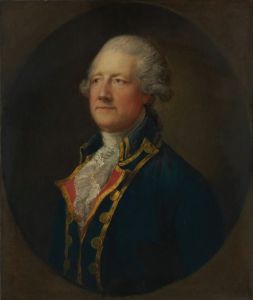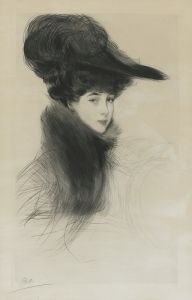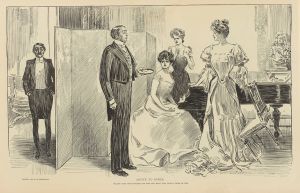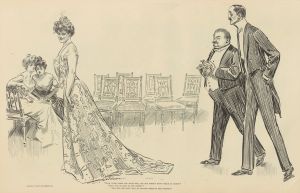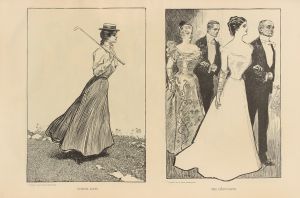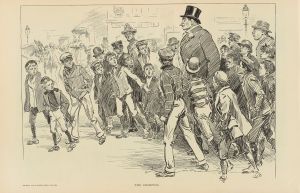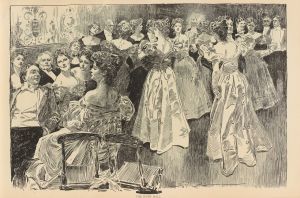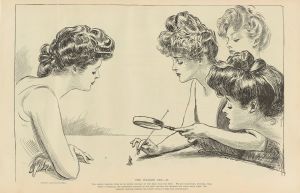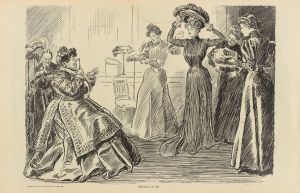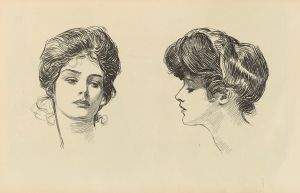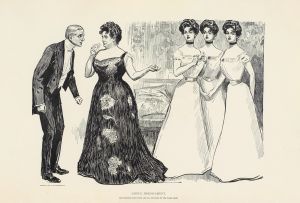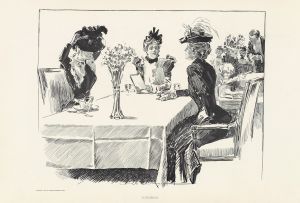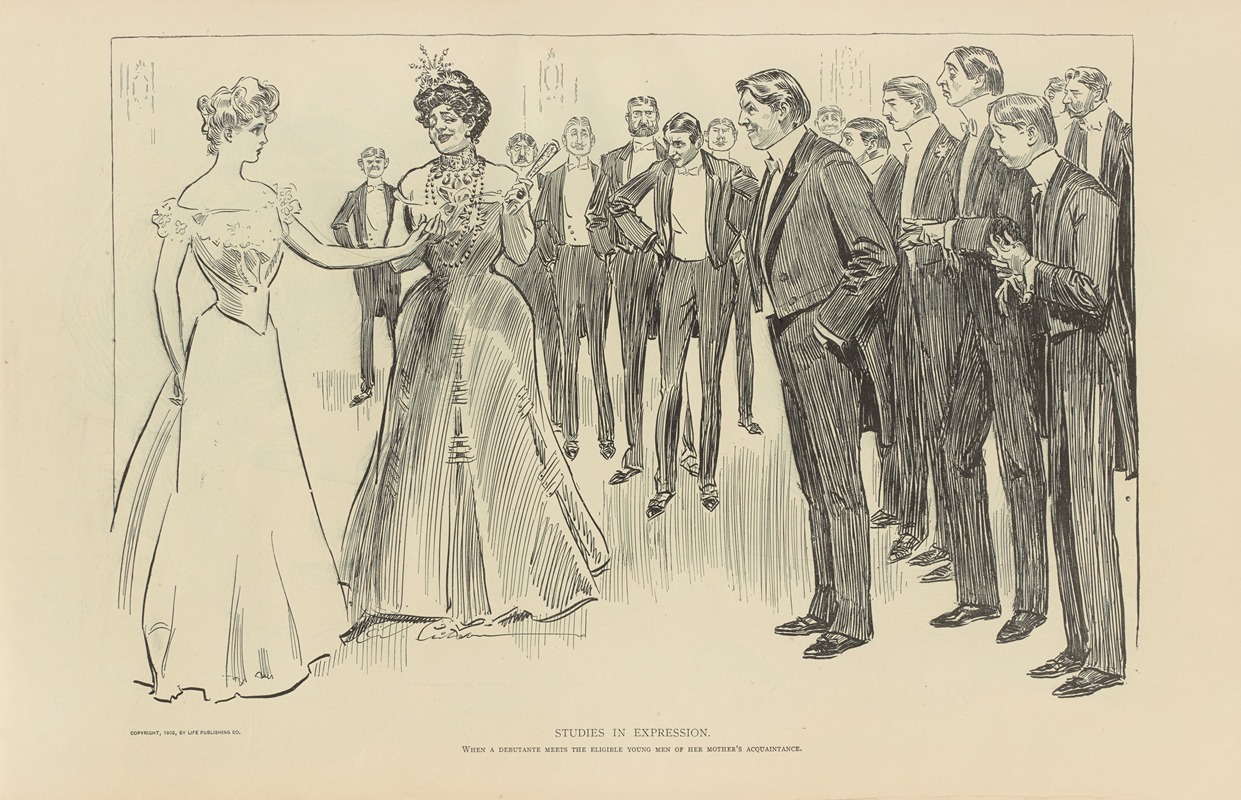
Studies in expression, when a debutante meets the eligible young men…
A hand-painted replica of Charles Dana Gibson’s masterpiece Studies in expression, when a debutante meets the eligible young men…, meticulously crafted by professional artists to capture the true essence of the original. Each piece is created with museum-quality canvas and rare mineral pigments, carefully painted by experienced artists with delicate brushstrokes and rich, layered colors to perfectly recreate the texture of the original artwork. Unlike machine-printed reproductions, this hand-painted version brings the painting to life, infused with the artist’s emotions and skill in every stroke. Whether for personal collection or home decoration, it instantly elevates the artistic atmosphere of any space.
"Studies in Expression, When a Debutante Meets the Eligible Young Men" is an illustration by the renowned American artist Charles Dana Gibson. Gibson, born in 1867, was a prominent illustrator in the late 19th and early 20th centuries, best known for creating the iconic "Gibson Girl," a representation of the idealized American woman of that era. His work was widely published in magazines such as Life, Harper's Weekly, and Scribner's, and he played a significant role in shaping the visual culture of his time.
The illustration "Studies in Expression, When a Debutante Meets the Eligible Young Men" is part of Gibson's exploration of social themes and the dynamics of high society. It captures a moment that was common in the social calendar of the upper classes during the late 19th and early 20th centuries: the debutante ball. These events were significant social gatherings where young women of marriageable age were introduced to society, and eligible bachelors were presented as potential suitors.
Gibson's work is characterized by its keen observation of social interactions and its ability to convey complex emotions and social nuances through facial expressions and body language. In this particular illustration, Gibson uses his signature pen-and-ink style to depict a scene filled with subtle humor and social commentary. The expressions of the debutante and the young men around her are meticulously rendered, capturing a range of emotions from excitement and nervousness to confidence and indifference.
The "Gibson Girl" aesthetic, which is evident in this illustration, portrays women as elegant, independent, and confident, yet still very much a part of the social conventions of the time. The men in the illustration are depicted as attentive and eager, reflecting the social expectations placed upon them to court and impress the debutante.
Gibson's illustrations often provided a satirical look at the social customs of his day, and "Studies in Expression" is no exception. Through his art, he offered commentary on the rituals of courtship and the roles of men and women in society. His work resonated with audiences of the time and continues to be appreciated for its artistic merit and historical insight.
Overall, Charles Dana Gibson's "Studies in Expression, When a Debutante Meets the Eligible Young Men" is a fine example of his ability to capture the essence of social interactions with wit and precision. It remains a valuable piece for understanding the cultural and social dynamics of the period in which he worked.





